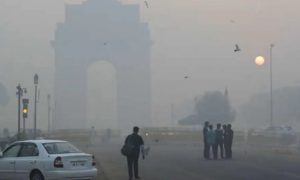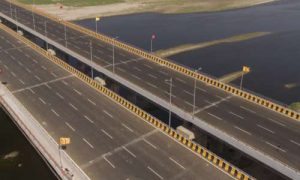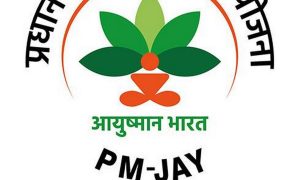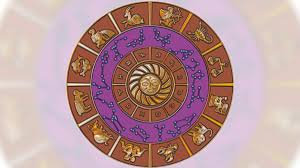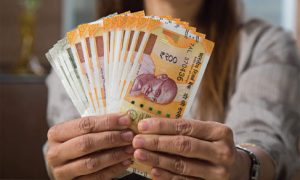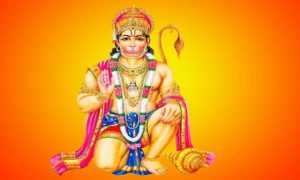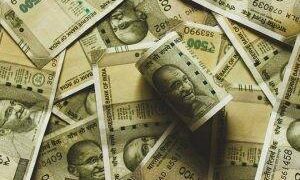The punishing heatwave sustained over weeks also pushed the peak power demand of Delhi to an all-time high of 8,656 MW, pointing to a massive consumption of electricity
The Delhi government on Wednesday held an emergency meeting with the heads of all major hospitals amid rising cases of heatstroke due to the scalding temperatures. The Centre also asked government-run hospitals to prioritise such cases, even as two deaths due to heat-related illness were confirmed in the national capital.
The ministry of health and family welfare issued a health advisory as an intense heatwave swept northern parts of India with maximum temperatures touching more than 45 degrees Celsius in many areas. All states and union territories have been asked to begin daily data submission on cases of heat stroke, focusing on deaths and the total number of deaths since March 1. The health ministry also listed out precautions to safeguard against the extreme heat.
Read More: Atishi Marlena Writes To PM Modi: ‘Resolve Water Issue Or Will Go On Indifinite Strike’
Due to prevailing heatwave conditions, hospitals in Delhi-NCR are seeing an influx of patients with complaints of heat stroke and exhaustion. “Out of five deaths, two are confirmed as per NCDC guidelines. The rest could have alternate diagnosis, so we are revising the death census to two,” an official of the Safdarjung Hospital told news agency ANI when asked about heatstroke-related cases.
Delhi health minister Saurabh Bharadwaj directed hospitals to scale up beds for patients suffering from heat-related illnesses. Beat officers and patrolling teams in the Delhi Police will also be roped in to move homeless people to shelters.
The punishing heatwave over weeks also pushed the peak power demand of Delhi to an all-time high of 8,656 MW in the afternoon, pointing to a massive consumption of electricity. The national capital, which is facing a severe water crisis as well, recorded a maximum temperature of 43.6 degrees Celsius over four notches above normal. The minimum temperature in the city was 35.2 degrees Celsius, the highest in June since 1969.
The India Meteorological Department has sounded heatwave alerts for large swathes of northern India — western and eastern Uttar Pradesh, Delhi, Punjab, Haryana, Chandigarh and Bihar — for at least another two days.
But, there may be some good news in store.
Read More: Delhi CM Arvind Kejriwal’s judicial custody extended till July 3 in excise policy scam case
The weather office said a western disturbance may provide much-needed relief, though only marginally, over the next few days. Also, conditions are now favourable for further advancement of the monsoon, which made no significant progress between June 12 and 18, extending the wait for rains in north India that is seeking much-needed respite from the sweltering heat.
At the same time, however, the IMD also said India will witness “subpar rainfall” for the month of June.
The water crisis in Delhi notwithstanding, storage levels in reservoirs and rivers have hit record lows. The water shortage for irrigation is impacting agriculture in some areas. Delhi water minister Atishi has sought Prime Minister Narendra Modi’s intervention as the water crisis has worsened. She threatened to go on an indefinite hunger strike from June 21 if the issue was not resolved soon.
Union health minister JP Nadda reviewed the heatwave situation and preparedness of central government hospitals. He directed officials to ensure that all hospitals are prepared for providing the best care to those affected and also ordered that special heatwave units should be started.
Deaths due to heat were not limited to India alone, as 68 haj pilgrims from the country died in Mecca. A diplomat in Saudi Arabia said 68 Indian nationals were among over 900 pilgrims who died at haj this year marked by searing heat.
“We have confirmed around 68 dead… Some are because of natural causes and we had many old-age pilgrims. And some are due to the weather conditions, that’s what we assume,” the diplomat, who spoke on condition of anonymity, told AFP.
The diplomat who confirmed the Indian fatalities said there were also some Indian pilgrims missing, but he declined to provide an exact number. “This happens every year… We can’t say that it is abnormally high this year,” he said. “It’s somewhat similar to last year but we will know more in the coming days.”
For the past several years, the haj has fallen during the sweltering Saudi summer. According to a Saudi study published last month, temperatures in the area where rituals are performed are rising 0.4 degrees Celsius each decade.
Read More: Vande Bharat Sleeper And Vande Metro To Launch SOON: Sneak Peek Into Features, Facilities And More
WHAT ARE THE DELHI GOVT’S INSTRUCTIONS?
The Delhi government’s health department has issued a circular to all MS, MDs and CDMOs to ensure that emergency services remain operational 24×7 in the hospitals. It said a senior doctor should always remain in the emergency to handle patients suffering from heat stroke. The MS/MDs must personally ensure their immediate admission and treatment, so that maximum lives can be saved, as per the notice.
The department is also sending a communication to Delhi police commissioner to ask patrolling teams to call ambulances in case they spot a destitute person who is sick or is running a high fever.
Bharadwaj, who is also Delhi’s urban development minister, has written to the DUSIB (Delhi Urban Shelter Improvement Board) to take action against officers for not complying with directions to inspect homeless shelters.
In his letter, he said, “Taking into account the prevailing heat wave, I had given verbal instructions to the CEO regarding appropriate arrangements in homeless shelters. Later, on June 10, I flagged a news story regarding issues with night shelters.”
Bharadwaj said he had given written directions to the DUSIB CEO on June 11 to assign three senior officers to conduct surprise inspections of at least five homeless shelters.
“The three officers, namely SK Singh, PK Jha and Fonia, were supposed to inspect these shelters and submit the list of deficiencies found to the undersigned on June 18,” as per the letter.
The officers were instructed to ensure arrangements were made for water dispensers and water-based air coolers in the shelter homes. The minister said he had expected the inspection report of at least 90 night shelters to be submitted.
“Till date, I have not received the inspection reports from DUSIB. Therefore, you are directed to take appropriate action against the officers for not complying with the directions,” the letter said.
WHY HAS POWER DEMAND REACHED ITS PEAK IN DELHI?
Discom officials said there has been massive consumption of electricity amid the heatwave. According to the real-time data of State Load Dispatch Centre (SLDC) Delhi, the peak power demand reached 8,656 MW around 3 pm on Wednesday.
Delhi recorded its warmest night in at least 14 years, with the minimum temperature settling at 35.2 degrees Celsius, more than eight notches above the season’s normal, the weather office said. The maximum temperature of the day was 43.6 degrees Celsius.
Delhi’s peak power demand clocked 8,000 MW for the first time on May 22, following which it has breached the 8,000-MW level nine times. The peak demand of the city has been above 7,000 MW for 31 days in a trot, officials said.
Air conditioning accounts for a whopping 30 to 50 per cent of a household and commercial establishment’s annual energy costs, they said. Increasing the temperature setting on one’s air conditioner by just one degree Celsius, electricity consumption can be slashed by approximately 6 per cent, they added.
“Due to the extraordinary heatwave and unprecedented power demand, the power systems are under stress. Even though they have been able to take the extreme power load, it is advisable that consumers should use the air conditioner thermostat at 26 to 27 degrees Celsius for comfortable and cost-effective cooling during the peak hours – 2 pm to 4 pm and 10 pm to 12.30 am,” said a discom official.
IT’S EXTREMELY HOT, BUT WHAT DO THE NUMBERS LOOK LIKE?
Maximum temperatures ranged from 43 to 45 degrees Celsius in many parts of Punjab, Haryana, Chandigarh, Delhi, UP and northern Rajasthan. The IMD said heat wave to severe heat wave conditions prevailed in parts of UP, south Uttarakhand, Himachal Pradesh, Haryana, Chandigarh, Delhi, Punjab and pockets of Odisha, Jharkhand, Bihar and the Jammu division.
Delhi, however, can expect light rainfall on June 20 due to a fresh western disturbance. Several places in Uttarakhand, including Dehradun received light showers on Wednesday after a prolonged dry spell. In Himachal, thunderstorms and rains in Shimla and surrounding areas brought some respite.
WHAT ARE THE EXPERTS SAYING?
According to experts, high minimum temperatures or warm nights are exacerbating the impact of the deadly heat. High night temperatures are considered dangerous because the body does not get a chance to cool down, they said.
Experts said increasing nighttime temperature is more common in cities because of the urban heat island effect, in which metro areas are significantly hotter than their surroundings. “This is scaring me. The minimum temperature in cities is not going down. People are not getting a chance to recover which means that we are getting more deaths at night than during the daytime, because normally the minimum temperature would fall and you would be able to recover to go back to work the next day, just not getting that,” noted environmentalist Sunita Narain.
India is experiencing one of its hottest summers this time. The IMD said around 40 per cent of the country has recorded double the number of heatwave days than it usually does. Experts attributed the scorching heat to climate change and the naturally occurring El Nino phenomenon, which is basically unusual warming of the ocean surface in the central and eastern Pacific Ocean.
While heatwaves are common in India during April and May, scientists said climate change has made them more frequent and intense. Data shows that 12 of the warmest years in India have occurred since 2006, with 2016 experiencing the highest temperatures to date.
(With PTI inputs)


